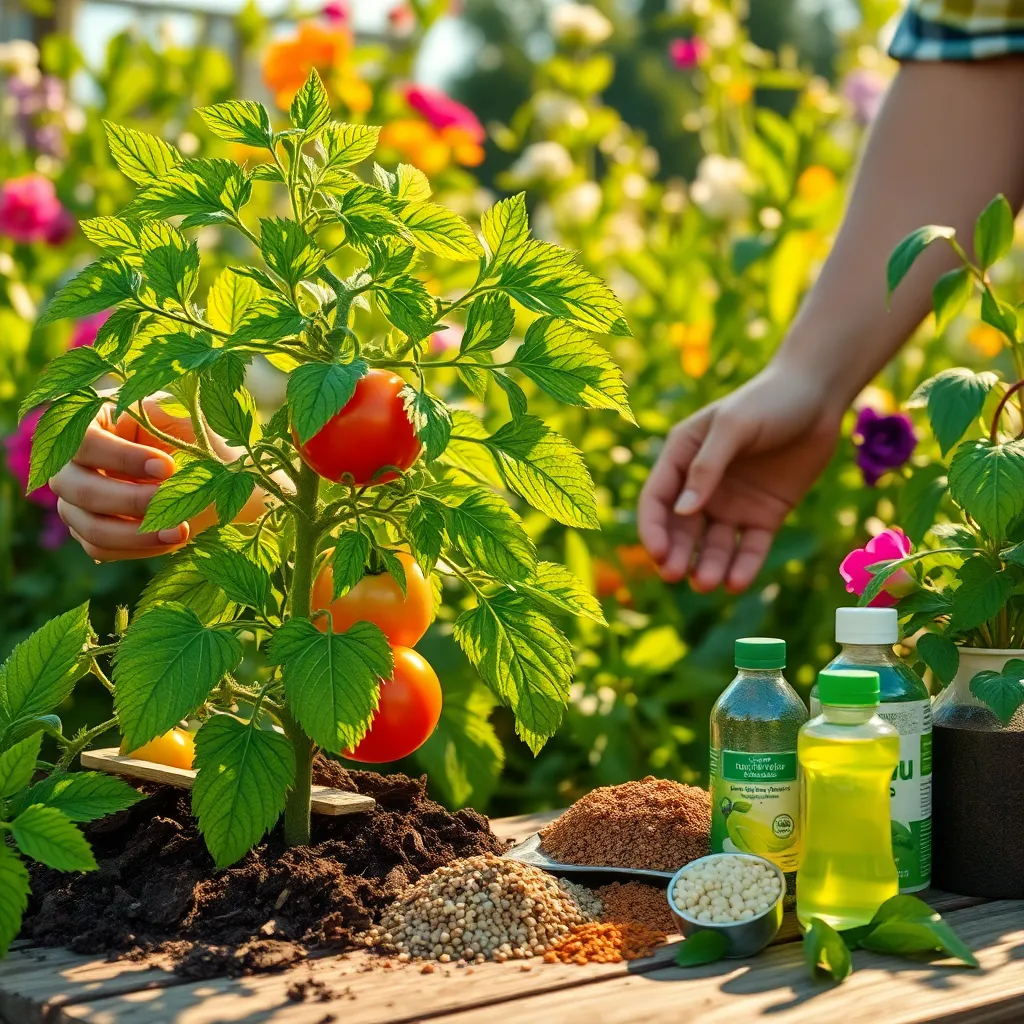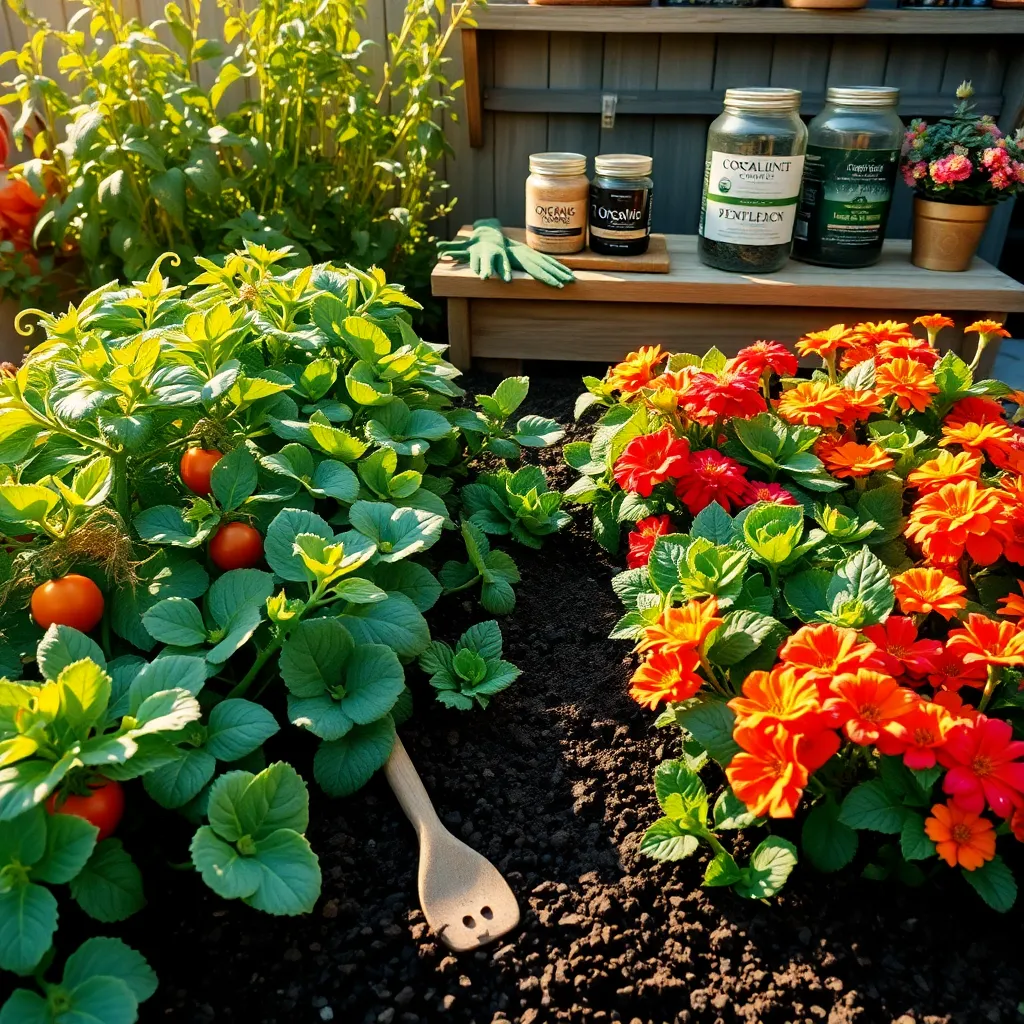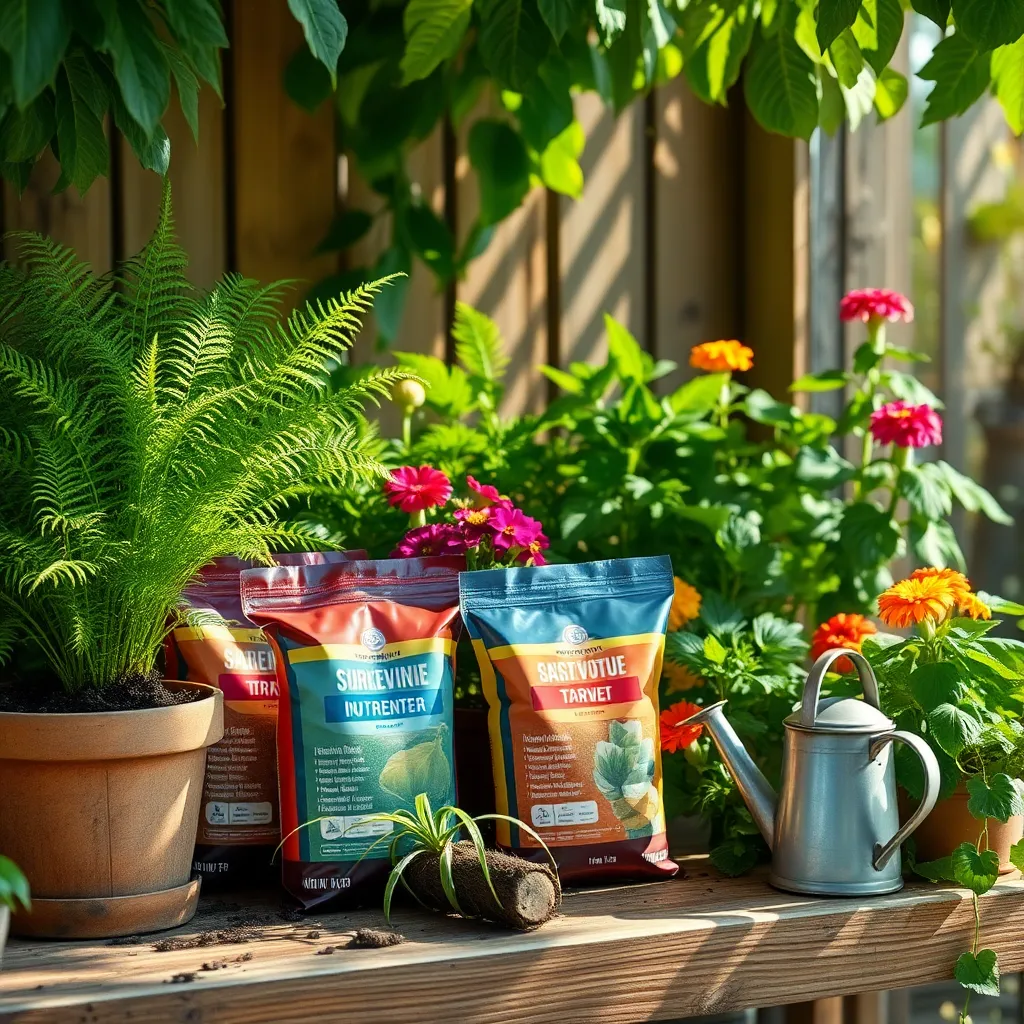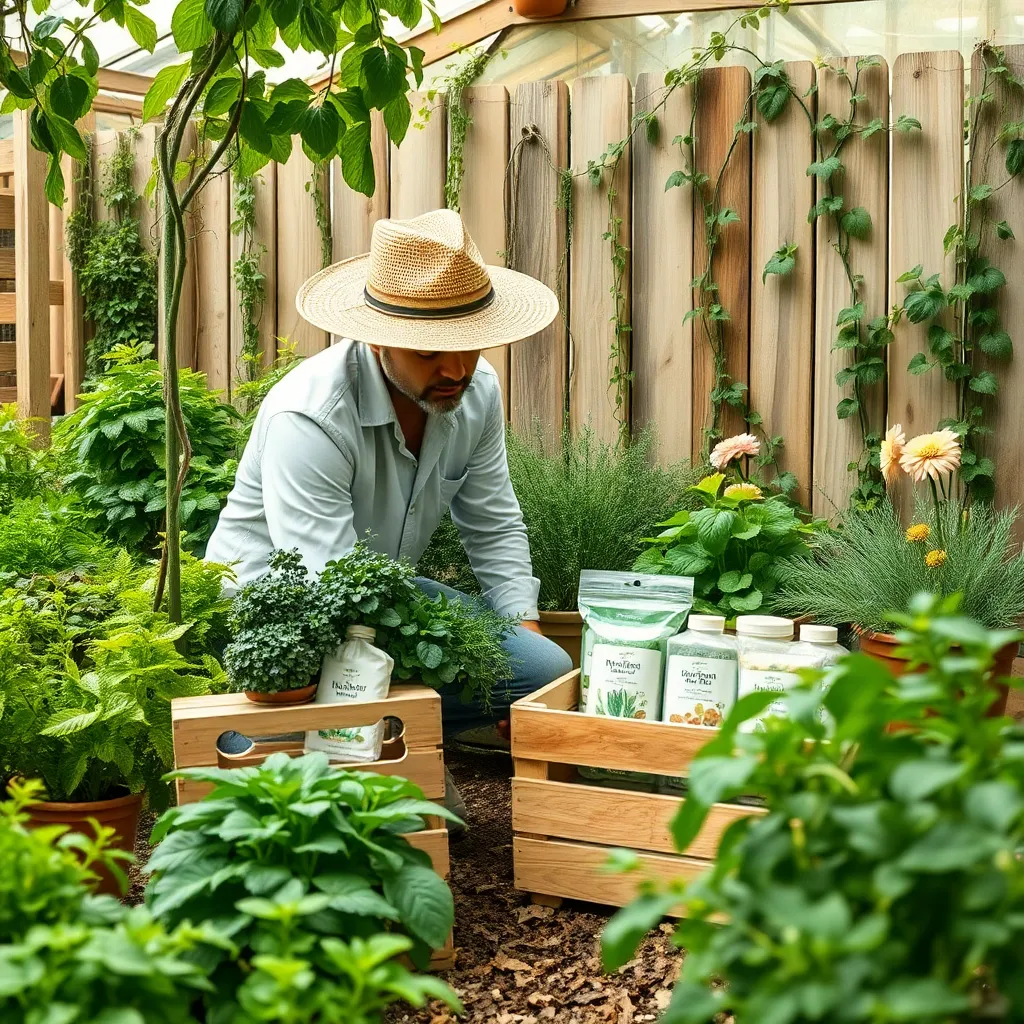In the rich tapestry of gardening, choosing the right fertilizer is akin to selecting the perfect ingredient for a cherished family recipe—it can elevate your efforts from good to truly extraordinary. Whether you’re nurturing your first houseplant or tending to a flourishing vegetable patch, understanding the nuances of plant nutrition is essential for any gardener who seeks to unlock the full potential of their greenery.
For beginners, the world of fertilizers can seem a bit like a maze, with terms like N-P-K ratios and organic versus synthetic swirling around. Fear not, as this guide will gently lead you through the basics, demystifying the jargon so you can confidently select the right nourishment for your beloved plants. Seasoned gardeners will find value too, as we delve into advanced tips and tricks to optimize plant health and achieve those coveted blooms and bountiful harvests.
In this article, you will discover how to assess the specific needs of your plants, ensure that your choices are environmentally sound, and learn the art of timing for application. From granular fertilizers to liquid feeds, and slow-release formulas to quick fixes, we’ll explore an array of options tailored to your gardening goals. Together, let’s enrich our gardens and our understanding, ensuring every leaf, petal, and stem thrives in its full glory.
Understanding Plant Nutrient Needs

Understanding the nutrient needs of your plants is crucial for their successful growth and development. Plants require a balanced combination of macronutrients and micronutrients to thrive, each playing a unique role in their health.
Macronutrients include nitrogen, phosphorus, and potassium, commonly referred to as N-P-K on fertilizer labels. These nutrients support essential functions like leaf growth, root development, and flower and fruit production, making them vital components of any fertilization plan.
Micronutrients, though needed in smaller amounts, are equally important for plant health. Elements such as iron, manganese, and zinc facilitate critical processes like chlorophyll production and enzyme activation, which are essential for vibrant plant life.
To ensure your plants receive the right nutrients, regularly test your soil to identify deficiencies or excesses. Consider using a soil test kit to measure pH levels and nutrient availability, allowing you to tailor your fertilization approach effectively.
When applying fertilizers, follow the recommended rates to avoid over-fertilization, which can harm plants and the environment. Use slow-release fertilizers for long-term feeding, and always water your plants thoroughly after application to help nutrients reach the roots.
For more advanced techniques, consider integrating organic matter like compost into your soil to improve its nutrient-holding capacity. This practice not only enhances soil structure but also promotes beneficial microbial activity, creating a healthier environment for your plants.
Types of Fertilizers Explained

Fertilizers are essential tools in a gardener’s arsenal, providing the necessary nutrients plants need for optimal growth. There are several types of fertilizers, each with its unique benefits and application methods, making it crucial to select the right one for your specific plants.
Organic fertilizers, such as compost and manure, are derived from natural sources and improve soil structure while feeding plants. They release nutrients slowly, making them an excellent choice for gardeners who prefer a more sustainable approach to plant care.
Chemical or inorganic fertilizers are manufactured to supply specific nutrient ratios and are available in various forms, including granular and liquid. These fertilizers provide a quick nutrient boost, which can be particularly beneficial for fast-growing plants or those showing signs of nutrient deficiency.
For gardeners interested in an eco-friendly alternative, slow-release fertilizers offer a controlled release of nutrients over time. This type of fertilizer reduces the risk of over-fertilization and can be especially useful in sandy soils where nutrients might otherwise leach away quickly.
When applying fertilizers, it’s essential to follow the recommended guidelines on the packaging to avoid damaging your plants. Over-fertilization can lead to nutrient burn, so always err on the side of caution and adjust based on the specific needs of your plants and soil conditions.
Whether you’re a beginner or an experienced gardener, understanding the different types of fertilizers and how they work will empower you to nurture a thriving garden. By tailoring your fertilizer choice to your plants’ needs, you can ensure healthy growth and bountiful harvests.
Organic vs. Synthetic Options

Choosing between organic and synthetic fertilizers can significantly impact your gardening success. Organic fertilizers, derived from natural sources like compost and animal manure, improve soil health over time by enhancing its structure and increasing microbial activity.
In contrast, synthetic fertilizers are chemically manufactured to provide immediate nutrient availability. They are typically more concentrated and can provide quick results, especially if your plants are showing signs of nutrient deficiency.
Organic options are ideal for gardeners looking to maintain a sustainable garden with minimal environmental impact. They release nutrients slowly, which means you need to plan their use well in advance to meet your plants’ needs.
For quick fixes or when growing in poor soil, synthetic fertilizers can be invaluable. However, it’s crucial to follow the recommended application rates closely to avoid burning your plants or causing nutrient runoff that could harm nearby water sources.
When choosing a fertilizer, consider your specific gardening goals and the needs of your plants. If you’re growing vegetables like tomatoes or peppers, organic fertilizers can enhance flavor and support beneficial soil organisms.
On the other hand, for container gardening or when you need a rapid growth boost, synthetic fertilizers might be more appropriate. Regardless of your choice, ensure you maintain regular watering and monitor your plants for signs of nutrient deficiencies, such as yellowing leaves or stunted growth.
To optimize plant health, you can also use a combination of both organic and synthetic fertilizers. This approach allows you to enjoy the immediate benefits of synthetics while building long-term soil fertility with organics.
Matching Fertilizer to Plant Type

When choosing a fertilizer, it’s crucial to match it with your plant type to ensure optimal growth. Different plants have varying nutrient needs, and providing the right balance can dramatically impact their health and productivity.
For flowering plants like roses and petunias, a fertilizer high in phosphorus will promote vibrant blooms. Look for a product labeled with a higher middle number in the N-P-K ratio, such as 10-20-10, to encourage flower development.
Vegetable gardens, on the other hand, benefit from a balanced fertilizer that supports both leaf and fruit growth. Consider using a 10-10-10 or 14-14-14 formula to ensure your plants receive a well-rounded nutrient supply.
Acid-loving plants such as blueberries and azaleas require specialized fertilizers that help maintain low soil pH levels. Products containing ammonium sulfate or sulfur-coated urea are excellent options to meet these plants’ specific needs.
Application Tips and Best Practices

When applying fertilizer, it’s essential to first read the label for specific application instructions. This ensures that you use the correct amount and avoid over-fertilizing, which can harm your plants.
Begin by testing your soil to determine its nutrient levels. This will help you understand what nutrients are lacking and allow you to choose a fertilizer that complements your soil’s natural composition.
For optimal results, apply fertilizer when the soil is moist, as this helps nutrients dissolve and reach the plant roots more effectively. Avoid applying fertilizer during a drought or when the soil is dry, as this can lead to plant stress or root burn.
Consider the timing of your fertilizer application carefully. Applying fertilizers in the early morning or late afternoon can prevent the sun from breaking down the nutrients too quickly and reduce the risk of burning the leaves.
For beginners, using a slow-release fertilizer can be a simple option that provides nutrients over time, reducing the need for frequent applications. More experienced gardeners might experiment with liquid fertilizers for a quick nutrient boost, especially during key growth phases.
Advanced gardeners might also explore foliar feeding, where nutrients are applied directly to the leaves. This method can be particularly effective during the growing season when plants need an immediate nutrient boost.
Always water your plants after applying granular fertilizer to help it penetrate the soil. If you’re using liquid fertilizer, ensure it’s diluted according to the instructions to prevent nutrient overload.
Keep an eye on your plants after fertilization to monitor their response. Adjust your fertilization schedule based on plant performance and growth; this responsive approach helps maintain optimal plant health.
Conclusion: Growing Success with These Plants
In nurturing any relationship, much like choosing the right fertilizer for your plants, it’s vital to understand each partner’s unique needs and preferences. We explored five key concepts: understanding the different types of relationship “fertilizers” such as communication, trust, and quality time; recognizing what your relationship specifically needs to thrive; applying these “nutrients” consistently; adjusting your strategies as the relationship evolves; and being patient, as growth takes time.
To take action today, have a heartfelt conversation with your partner about what “fertilizers” are most beneficial for your relationship right now. This open dialogue can be the first step towards a more fulfilling connection.
Don’t let this valuable information slip away—bookmark this article now, so you can revisit these insights whenever your relationship needs a boost. By investing time and effort into choosing the right “fertilizers,” you’re setting the stage for a flourishing relationship that grows stronger with each passing day. Remember, the seeds you plant today can blossom into a beautiful future filled with love and understanding. Let this be the beginning of a thriving partnership!

